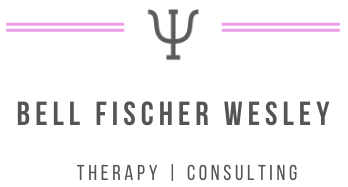We previously shared that telepsychology has become evermore popular and necessary, in light of the COVID-19 global pandemic and recommendations to practice social distancing. A recent survey conducted by the American Psychological Association (APA) recorded that approximately 75% of psychologists are now providing teletherapy, in response to COVID-19. Numerous studies have also shown teletherapy can be just as effective as in-person therapy including individual and group teletherapy. This week, we’re discussing unique considerations to help ensure a safe and fulfilling treatment outcome during individual and/or group teletherapy.
Privacy and Confidentiality
Privacy and confidentiality are necessary elements to cultivate a safe and trusting experience between a client and psychologist. Licensed professionals are legally and ethically obligated to maintain clients’ confidentiality throughout the course of treatment. Typically, this is achieved by scheduling appointments in a private office and agreeing not to disclose identifying information to another person without a signed release form. However, on a virtual platform, additional precautions must be established to create a similarly safe and trusting experience. Some psychologists, like me, will continue working from their private office while conducting appointments online. But clients might be located in places occupied by other people, (i.e. at home with family members, at work with coworkers, outside with other people nearby, etc). If you, or your psychologist, are located anywhere other than a private office, consider the following to protect privacy and confidentiality during individual or group teletherapy sessions:
- Be sure you are located behind a closed door, rather than an open room that other people can walk through. If you are outside, find a discreet location with little to no foot traffic. Inform others located nearby that you may not be interrupted during your scheduled appointment.
- Position yourself so that your back is against a wall. If someone does enter the room, then they will not appear on screen or be able to view whomever may be on your screen.
- Connect headphones to your computer or device, to prevent anyone from overhearing the conversation.
Safety and Consent
At the onset of individual or group teletherapy, your psychologist will likely ask you to sign a telepsychology consent form as well as the usual informed consent form. The purposes of this additional consent form are: 1) to outline the unique challenges and benefits of teletherapy, 2) to request the name and contact information of a person who can reach you in case an emergency arises during a session; your psychologist will need to rely on a trusted person to help, and 3) to outline any additional agreements specifically related to teletherapy such as appropriate use of chat, video, or telephone features. In most cases, a psychologist will not agree to engage in teletherapy without a signed telepsychology consent form.
Use of Technology
Comfort and familiarity with technology are important in order to successfully engage in teletherapy – you and your psychologist must understand how to use and troubleshoot on the designated platform. Additionally, you must agree on an alternative mode of communication in case you get disconnected. For example, I request my clients keep their phone charged and nearby during individual and group teletherapy sessions. If the video connection fails, then I will call the client(s) instead. Finally, if a teletherapy session is disrupted for an extended period of time due to a glitch in technology, then I agree to charge a pro-rated fee rather than the full session fee.
“Zoom Fatigue”
Zoom fatigue refers to the additional effort required to attune to interpersonal experiences, such as nonverbal cues, during remote interactions. It is important to acknowledge this incremental fatigue and how it might disrupt your individual or group teletherapy experience. Together, clients and psychologists can successfully address Zoom fatigue through open and honest dialogue and negotiations. For example, I am mindful of the number of successive clients I schedule on a given day and notify clients when I have exceeded my availability. Additionally, I schedule clients in between days designated for administrative tasks. Some of my clients have requested to have shorter sessions rather than the typical, 50-minute session.
All my best,
NLF
DISCLAIMER: Bell Fischer Wesley Therapy & Consulting, LLC is pleased to provide you with this website for your personal education and informational purposes only. Nothing found on this website (or social media pages) is intended to be a substitute for professional psychological, psychiatric or medical advice, diagnosis, or treatment. Bell Fischer Wesley Therapy & Consulting, LLC assumes no liability for any diagnosis, treatment, decision made or action taken in reliance upon information contained in this website or any other internet sites linked to it in any way.


Leave a Reply